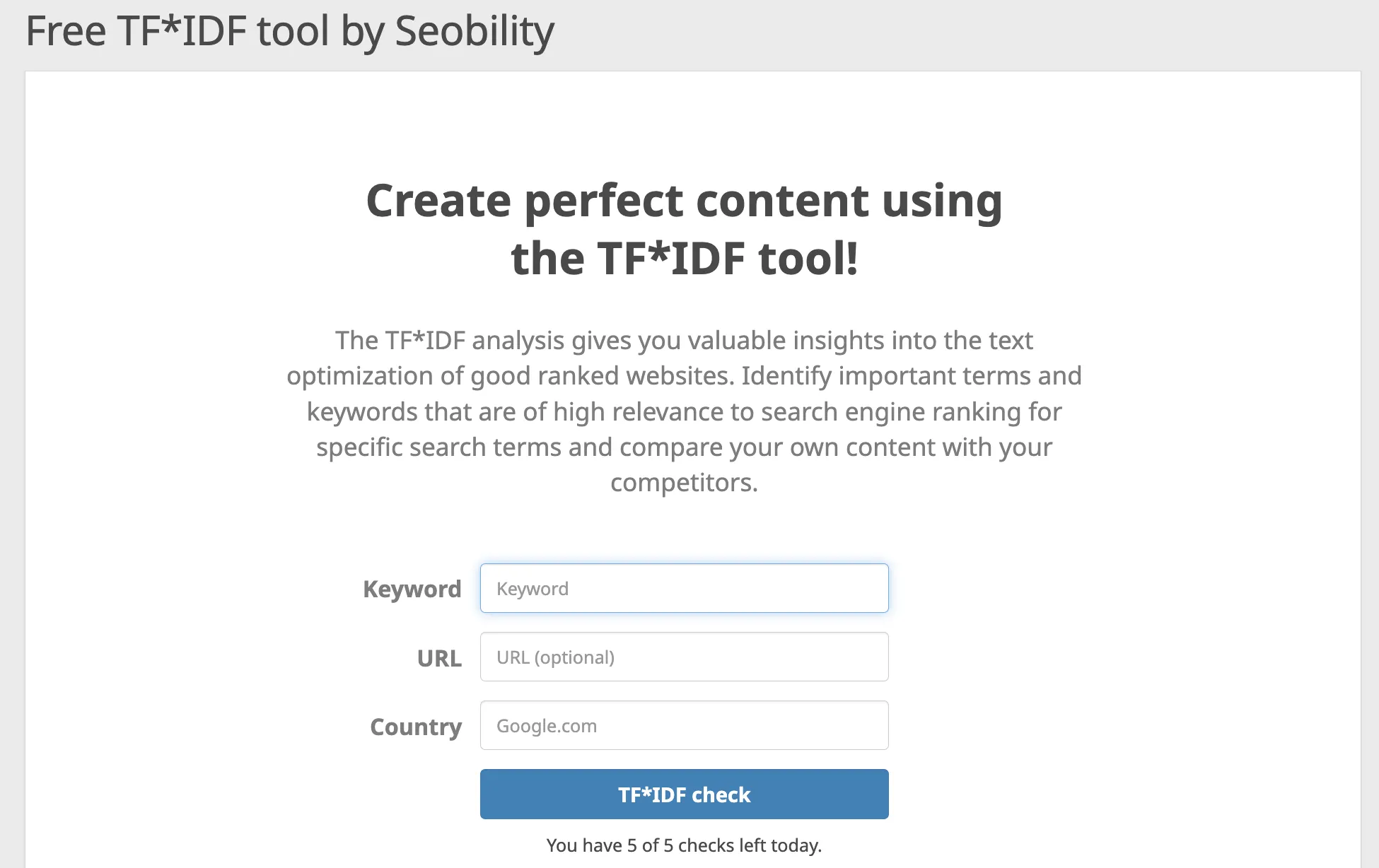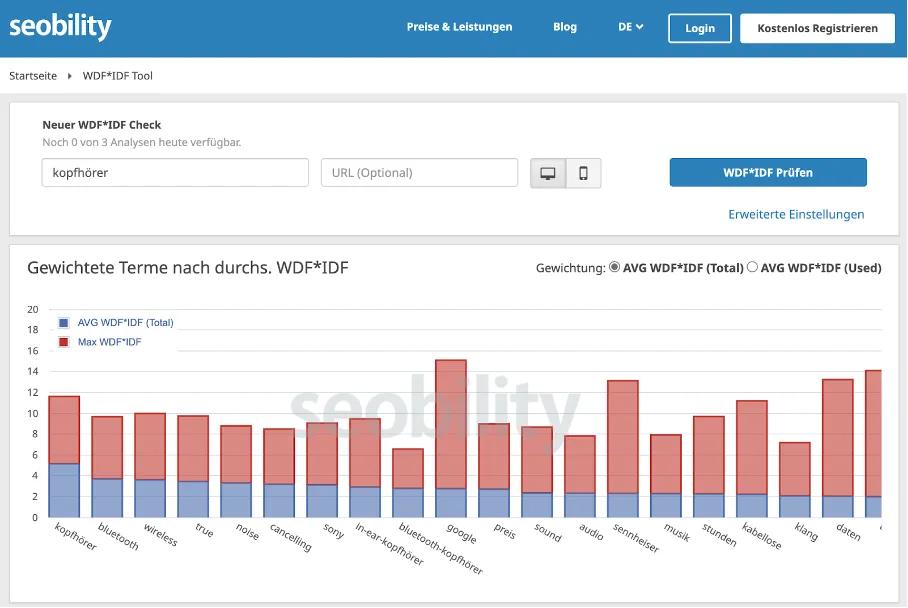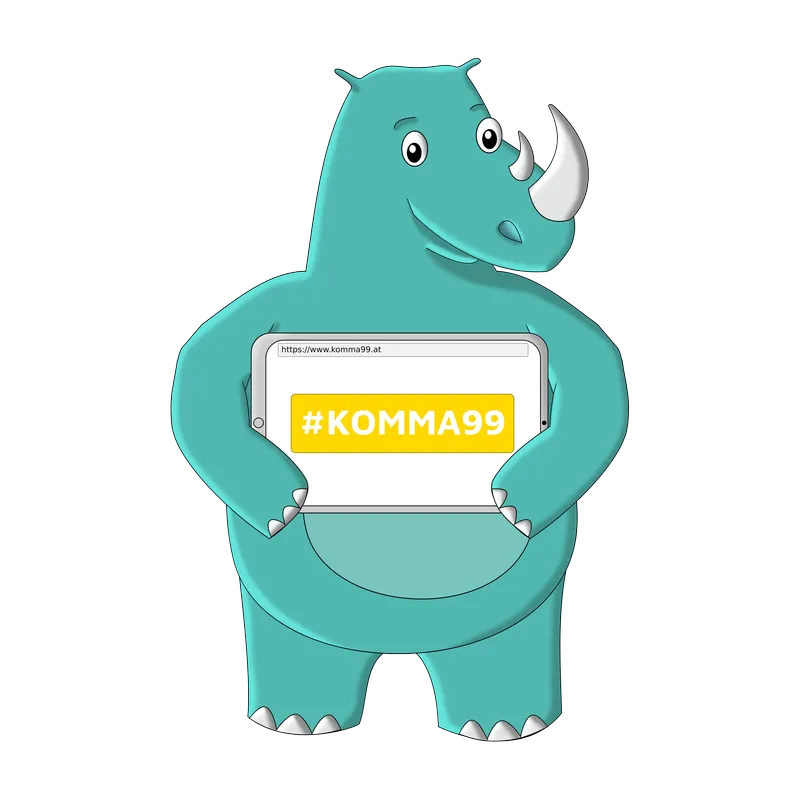What is a WDF*IDF analysis?
You want to write SEO texts on a certain topic for your website, but wonder how often you should write a Keyword so that the content also gets an ideal visibility in search engines (such as Google)? The WDF*IDF formula can be used to determine the optimal distribution of topic-relevant keywords in any text.
It should be noted that the focus is not on the density of the terms (keyword density), but on the entire content of the text. With the results of the WDF*IDF analysis, you can optimize your texts so that a specific topic is presented in particular detail. By the way, the WDF*IDF analysis is an ideal aid for text authors to find out which word components are missing or should be increased or decreased in frequency.
What does WDF mean and what does IDF mean?
WDF = "Within Document Frequency
- The frequency of a certain term (keyword or a combination) in a document can be displayed in direct relation to the other keywords in the same text.
- Describes the frequency of a term or combination within a document.
IDF = "Inverse Document Frequency
- The frequency of a keyword in a text is set in relation to the frequency of the keyword in all other text documents.
- Is the term weighting of a particular term within multiple documents.
- Describes the frequency of a keyword in a document in relation to the frequency of this keyword on other known documents.
Both formulas together give the relative term weight of a document in relation to all potential possible documents containing the same term.
Backgrounds and possible applications of a WDF*IDF analysis
When creating text, particular attention must be paid to the right terms. The more a certain word appears in the content, which is evaluated by the search engines (Google, Bing, etc.) as particularly suitable for a term, the more important the word is for the respective search term. With the WDF*IDF analysis, users receive corresponding proof keywords as suggestions (= supplementary keywords) - These keywords should be present in a text document in addition to the actual search terms.
How exactly does the SEO content optimization formula work?
- The first step must be a main keyword - the content should then also be optimized for this term.
- By means of already existing online tools, you can now create a WDF*IDF-Analysis .
- WDF*IDF tools examine all web pages with the best ranking with regard to the specified term
- Based on the analyzed pages, the tools then determine the most relevant search terms (= Keywords) and the Term weighting (How often which keyword should appear in the text)
- Now the exciting part: The tools show you now all relevant terms and their frequency distribution - The best WDF value is determined.
Tools for optimizing the SEO content on your website
- XOVI SEO Tools
- Seobility
- Sistrix
Examples of a WDF/TF*IDF analysis


Weaknesses of WDF*IDF
Even if the WDF*IDF analysis takes a lot of work off your hands and gives you a good overview of the weighting of the individual keywords, you should still not rely exclusively on this analysis. Because a WDF*IDF analysis only makes sense if you have a website with a lot of content - if you want to use it to optimize an online store where there is not much text, this tool is only recommended to a limited extent.
Likewise, the WDF*IDF analysis should only be used with caution from an editorial point of view, as the quality of the texts suffers greatly due to the use of all displayed terms (in the SEO field, this is often referred to as "keyword stuffing").
Not to forget the regular change of the rankings, this of course also requires a regular adjustment of the content.







